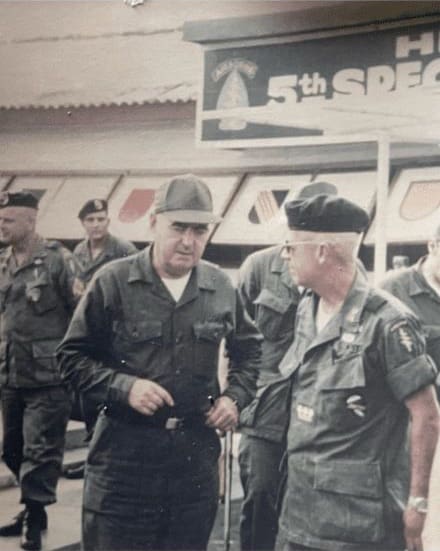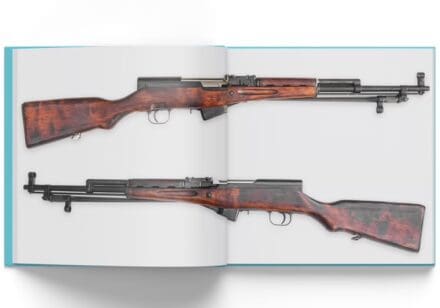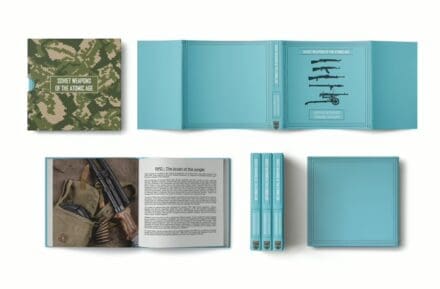In this taken sometime in October 1968 photo you see USAF General Curtis LeMay meeting with 5th SFG(A) Colonel Harold “Hank “ Aaron at 5th Group HQ in Na Trang, Republic of Vietnam.

Although LeMay is in a simple set of fatigues, he was obviously a civilian when this photo was taken. He had retired in 1965 as Chief of Staff of the Air Force. This is right at the end of his failed bid for Vice Presidency as running mate of George Wallace in their 3rd party candidacy on the American Independent Party ticket. Even Wallace’s staffers thought he was out there for his stance on nuclear weapons.
LeMay served in the US Army’s air component and then in the Air Force from 1929 until 1965 with service in World War Two as well as the Korea and Vietnam wars. Having overseen the use of nuclear weapons at the end of WWII, he was the first commander of Strategic Air Command from 48-57 and transitioned the bomber five from propeller to jet engines aircraft. He also led the first deployment of ICBMs and was a vocal supporter of their use in conflict which often put him at odds with the civilian leadership. He was known as a staunch disciplinarian during his time as Commander of SAC but that actually began during the war in the Pacific when he dealt with high abort rates of bombing missions by declaring that he would fly the lead bomber on all missions and that any crew who did not make it over the target would be court martialled.
We also have LeMay to thank for buying the first M16s for use by Air Police while Chief of Staff, directing the acquisition of 80,000 M16s in 1962.





















































































































